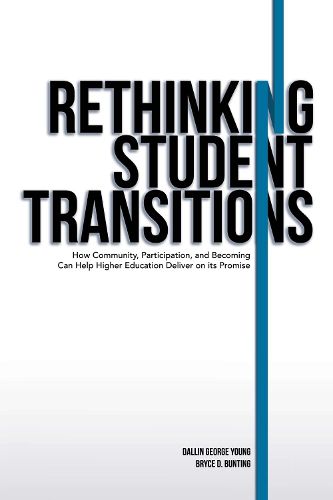Readings Newsletter
Become a Readings Member to make your shopping experience even easier.
Sign in or sign up for free!
You’re not far away from qualifying for FREE standard shipping within Australia
You’ve qualified for FREE standard shipping within Australia
The cart is loading…






Rethinking Student Transitions: How Community, Participation, and Becoming Can Help Higher Education Deliver on its Promise, presents a reimagined theory of student transitions in college. The authors contend that while previous theorizations have helped move the practice of supporting student success forward through the latter half of the twentieth century, earlier conceptualizations and models have led to an inconsistent and incomplete picture of students' experiences in transition. The book offers both a review and critique of current models of transition and then develops a new conceptual viewpoint based in the ideas of situated learning and transitions as becoming. The second half of the book is dedicated to using this new theoretical perspective to illustrate how higher education professionals can create conditions to support students in transition more intentionally, with a particular view toward supporting historically marginalized students, including racially and ethnically minoritised students, first-generation students, and post-traditional students.
$9.00 standard shipping within Australia
FREE standard shipping within Australia for orders over $100.00
Express & International shipping calculated at checkout
Rethinking Student Transitions: How Community, Participation, and Becoming Can Help Higher Education Deliver on its Promise, presents a reimagined theory of student transitions in college. The authors contend that while previous theorizations have helped move the practice of supporting student success forward through the latter half of the twentieth century, earlier conceptualizations and models have led to an inconsistent and incomplete picture of students' experiences in transition. The book offers both a review and critique of current models of transition and then develops a new conceptual viewpoint based in the ideas of situated learning and transitions as becoming. The second half of the book is dedicated to using this new theoretical perspective to illustrate how higher education professionals can create conditions to support students in transition more intentionally, with a particular view toward supporting historically marginalized students, including racially and ethnically minoritised students, first-generation students, and post-traditional students.